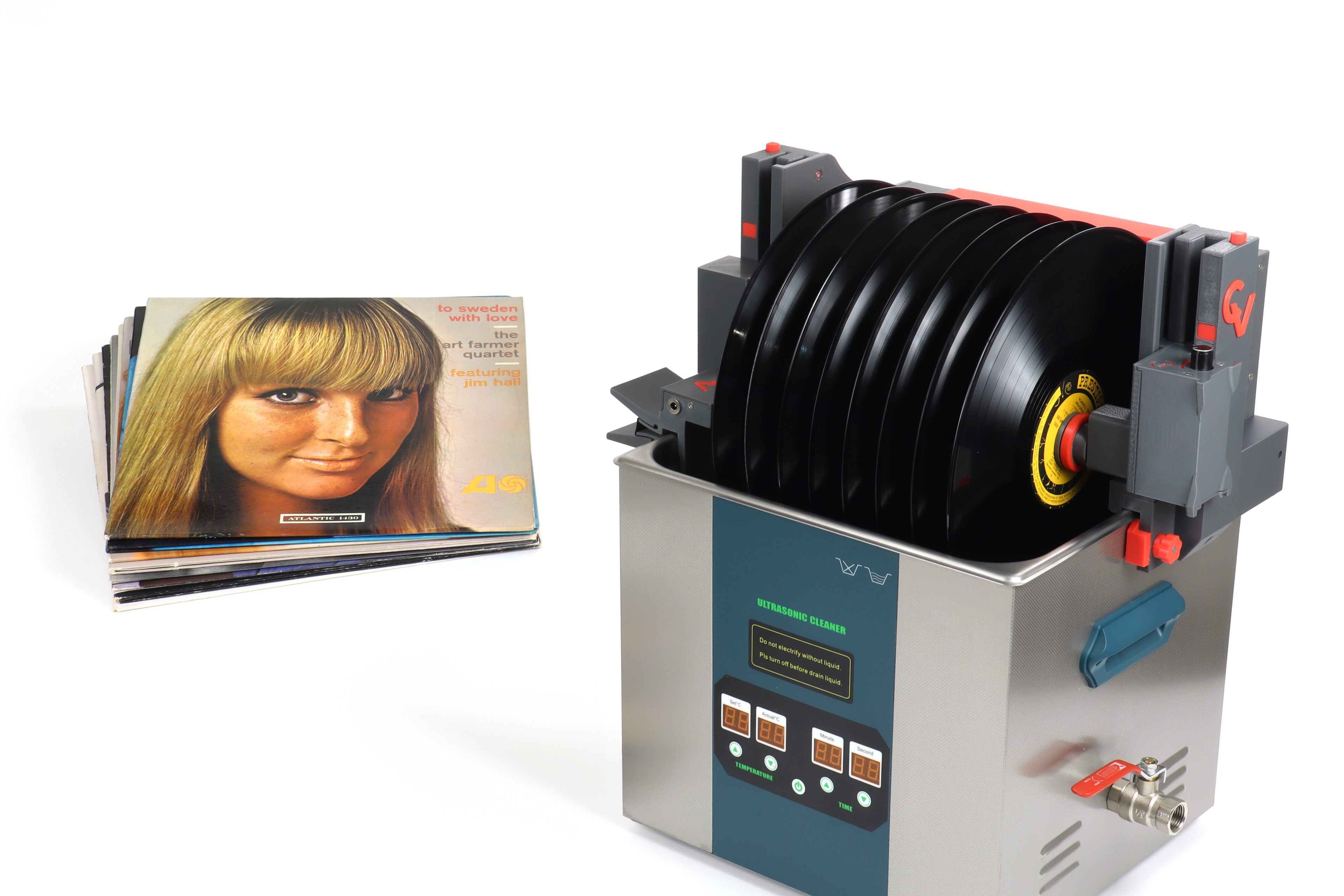Ultrasonic cleaning is able to penetrate into very small gaps and crevices. This is impressively demonstrated in the video below. The video shows the standard test for ultrasonic cleaner efficiency, where two ceramic rings are pressed together with some contamination in between them. The ultrasonic action is able to get the contamination from in-between the two rings.
It follows that even closely spaced records will get cleaned.
However, two more factors need to be considered to determine the best spacing:
1) Absorption of ultrasonic sound waves:
The more objects are put into the cleaner the weaker the ultrasonic wave field will be through out the cleaner since they are partially absorbed by the items in the cleaner. This means fewer records in a bigger cleaner yields a better cleaning efficiency.
2) Redeposition of dirt:
More records in the cleaner means more dirt removed. That contaminates the fluid more quickly compared to a situation where only few records are in the cleaner. Redeposition can be strongly reduced by filtering the water during the cleaning process with our Micron filtration system.
This means that, as a rule of thumb, very dirty records should be spaced widely, while records in already decent condition can be spaced more closely.
For maximum throughput at wide spacing we recommend our CleanerVinyl ProXL System. It can clean up to 8 records at 1 inch, 14 records at 0.5 inch and 25 records at 0.25 inch spacing.
This short video published by the company Blue Wave gives an impressive demonstration of the capabilities of the ultrasonic cleaning process.
See how the process is able to remove contamination between two tightly pressed together ceramic rings.
